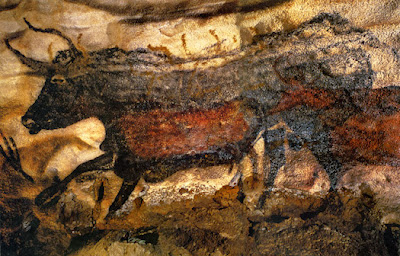The Incredible Journey (Part Two)
By Bethany Youngblood |
| Tower of Babel jahartwick.blogspot |
How Did They Go?
The evolutionary standpoint has man (or Homo-sapiens) migrating extremely slowly taking tens of thousands of years to get anywhere of interest. (We will go into how quickly man could have populated the globe a little later though.) Their reasoning is based on the assumption that man was still evolving into during those tens of thousands of years. In other words man wasn’t yet capable of conquering what lay before him. But we know different.
Ancient man could have populated the globe in a relatively short period of time just by using the skills and characteristics God created in him: intelligence and resourcefulness. When the people scattered they would have split into family groups that spoke the same language. These groups would have taken their own share of civilization-building knowledge from the Tower of Babel and carried that with them wherever they went. The migration did not have to happen in one continuous burst. Populations could have moved along at a leisurely pace, following herds of game while they needed to and settling down when they found a prime piece of real estate. In a few years a younger generation could pick up the pace and migrate further, again, taking their intelligence and abilities with them.
Over Land
It makes sense how ancient man would have traveled through valleys and over mountains to reach areas like Africa, Europe, and Asia, but what about reaching a more remote landmass like North and South America? Is it possible they simply walked over? Actually yes, this is a very plausible and accepted theory. The most likely route ancient man could have taken to get into North America would be to cross the Bering Strait.
 |
| Bering Land Bridge |
- Early in the Ice Age – Starting with the knowledge that the Ice Age caused sea levels to rise and fall we can safely operate under the assumption that the Bering Strait might have easily been shallower than it is today early in the Ice Age. Between 100 and 400 years after Babel, the pile up of snow and ice would have briefly exposed the land beneath the Strait for ancient man to simply walk across and enter Alaska! Also, at this early stage of the Ice Age there would have been an ice-free corridor stretching from the Yukon all the way down into the American Rockies. Within this timeframe there could have even been more than one wave of immigrants to enter the continent.
- The Hybrid Option – While most of the migrations into the Americas were over land, some groups could have tried for traveling down the Pacific coastline. A hybrid approach, they could have walked where they could and constructed boats to float them the rest of the way.
Over Sea
Wait, boats? Does your mental image of ancient man traveling to populate the globe not include them traveling by boat? Land bridges to places like the Americas and Australia would have only been available for a short time, whereas boats could be used whenever someone had need of them. In fact travel by boats would explain later populations on Hawaii and people groups in South America like the Olmec.
 |
| Ra II http://www.kon-tiki.no/E-Exp_RA-2.php |
How Long Did it Take?
Was this incredible journey possible within a biblical timeframe? Absolutely! There is no need for tens of thousands of years in the equation here.
Michael Oard states in his book “Frozen in Time” that:
“The journey from the Tigris-Euphrates Rivers to the southern tip of South America did not need to be a grueling journey, as some have envisioned, nor did it need to take a long time. If the tribes were nomadic hunters and they averaged two miles a day for only four of the warmest months, they would move at the rate of 250 miles (400 km) a year. The distance to the southern tip of South America is about 15,000 miles (24,000 km). At the rate of 250 miles (400 km) each summer, the people could have made the journey in only 60 years.”[6]
Sixty years would be the speedy minimum as it is possible the people were moving much slower than this. But it does put things into perspective. A few hundred years is more than enough time for ancient man to have spread to fill all corners of the globe.
Conclusion
So, this incredible, seemingly impossible journey between the dispersion of Babel and the civilizations that sprung up after the migration can be explained from a biblical perspective. Surely that journey must have been filled with countless tales of adventure and danger as the people settled and grew into the civilizations history would later record.

















